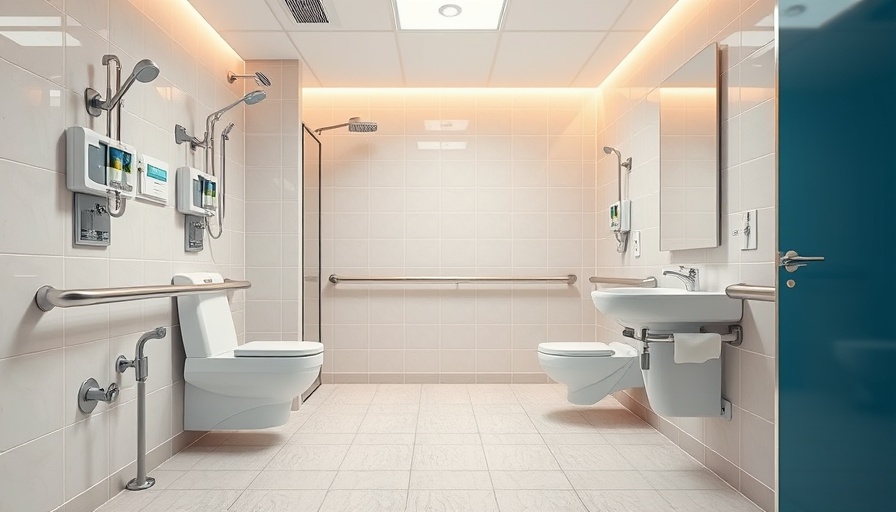
Revolutionizing Patient Care: The Must-Have Bathroom Modifications
In the realm of patient care, bathroom accessibility often takes a backseat in discussions. However, enhancing bathroom functionalities through thoughtful modifications can be life-changing for those with mobility challenges. From practical grab bars to specialized toilets designed for comfort and safety, these adjustments play a crucial role in promoting independence and dignity for all users.
Understanding the Risks: The Importance of Accessibility
Statistics reveal a concerning trend: nearly 1 in 4 adults aged 65 and older experience falls each year, which can lead to severe injuries. With the right bathroom modifications, healthcare institutions can help to mitigate these risks significantly. Utilizing grab bars, for example, serves not only as a physical safety measurement but also promotes confidence among patients navigating unfamiliar environments.
Enhancing Safety: The Vital Role of Grab Bars
Falls are a leading cause of injury in older adults, and grab bars are an essential tool in fall prevention. These sturdy support systems assist individuals, particularly in slippery or unfamiliar settings, providing much-needed stability. In clinical environments, their strategic placement near high-risk areas such as showers, tubs, and toilets can create a sense of security and independence for patients.
Redefining Toilet Accessibility: A Dignified Experience
Standard toilets may not accommodate the various needs of all patients. Accessible toilets, featuring higher seats and spacious designs, make bathroom visits safer and more comfortable. Modern variations also include helpful features like adjustable heights and bidets, which enhance both hygiene and functionality. Transforming a simple bathroom into an accessible space reveals a commitment to the dignity and emotional well-being of every patient.
Psychological Well-Being: The Hidden Benefits of Bathroom Modifications
The psychological impact of bathroom modifications can’t be underestimated. The ability to use the toilet independently can foster a renewed sense of control and dignity for patients. Patients who feel comfortable and secure are more likely to engage with their recovery processes, accelerating healing and improving overall mental health. Conversely, poorly designed bathrooms can lead to feelings of powerlessness and embarrassment, emphasizing the need for healthcare providers to prioritize these modifications.
Choosing the Right Features: Practical Considerations for Modifications
When considering bathroom renovations, the selection of appropriate materials and features is essential. Non-slip surfaces, adjustable-height fixtures, and strategically placed grab bars are just a few examples of how thoughtful design can impact patient care. Healthcare facilities and individual homeowners must conduct thorough assessments of each unique situation, ensuring modifications meet patients’ physical, emotional, and psychological needs.
Future Insights: Trends in Bathroom Accessibility
As societal awareness regarding the importance of accessibility grows, future trends will likely reflect a shift towards even more innovative solutions for bathrooms. Technology, such as motion sensors for automatic lights and smart toilets with automated features, may soon become the norm. Investing in these upgrades not only improves the quality of life for patients but can also enhance the reputation of healthcare facilities as leaders in patient-centered care.
In conclusion, with the growing emphasis on patient safety and quality of life, the importance of bathroom modifications cannot be overstated. Prioritizing accessibility in healthcare settings is fundamentally about respecting individuals’ dignity and independence. Whether considering a personal home upgrade or a healthcare facility redesign, these modifications should be at the forefront of our conversations around patient care.
Now is the time to take action! If you’re considering bathroom modifications or working within a healthcare facility, think about the impact these changes can have on patient care. Start planning today for a safer, more welcoming bathroom space that enhances dignity and independence.
 Add Row
Add Row  Add
Add 




Write A Comment